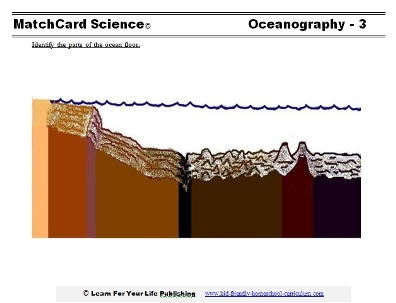Ocean Zones
O\Our ocean zones worksheet compares three different underwater zones.
Kids in 3rd to 8th Grade explore the depths of the sea with this ocean zones worksheet.
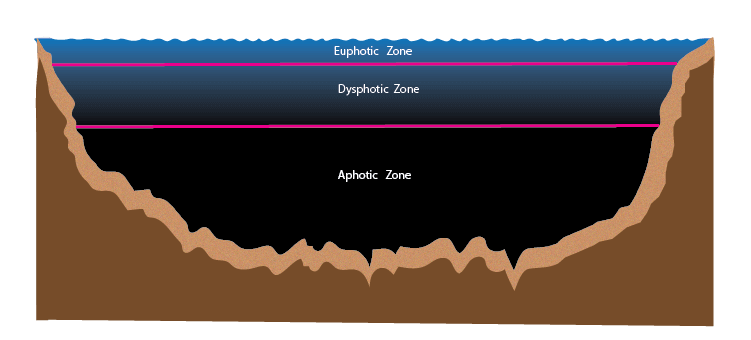
Free Download Below
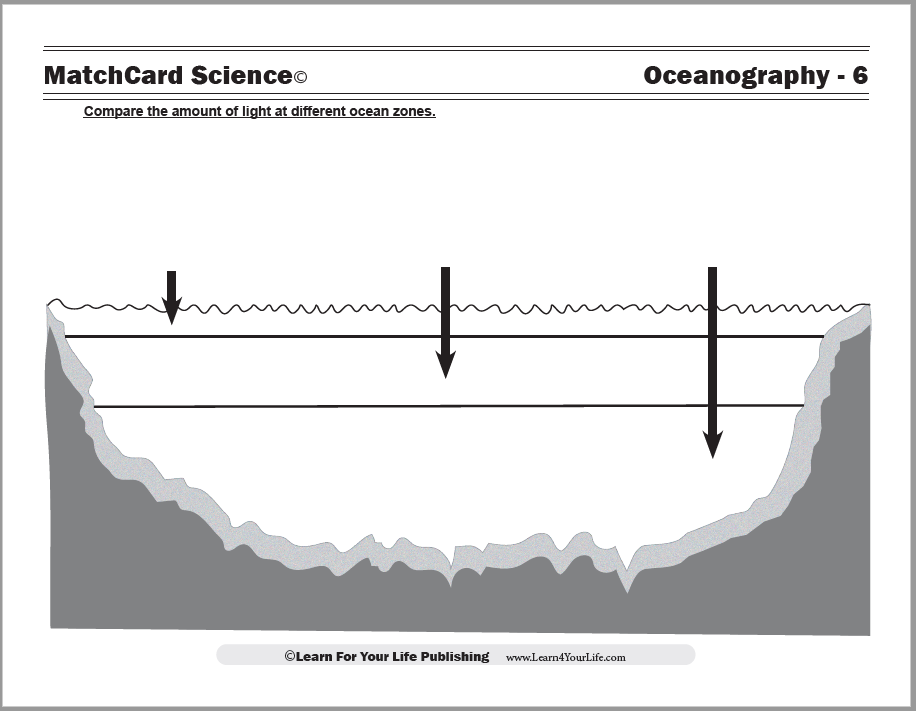
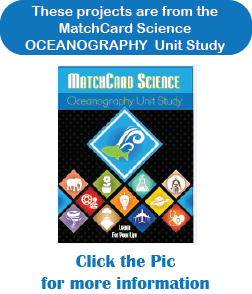
MatchCard Science Ocean Zones Worksheet
Objective: Compare the amount of light at three different ocean zones.MatchCard: Download below.
The ocean zones worksheet has a diagram of the three different ocean zones: euphotic zone, dysphotic zone, and aphotic zone. Information pieces will be matched to the correct zone.
Projects: Find out how much water filters out light.
Download and Use the Ocean Zones MatchCard
This is MatchCard #6 of the Oceanography Unit Study. More information on the MatchCard Science curriculum is at the bottom of this page.Preliminary Activity: Light and Water
You will need:- A tall glass or transparent vase
- Newspaper print or brochure to read
- Key Chain LED light or other weak light
- Water
- Sheet of paper folded in quarters
- A dark room
- Tape the brochure or newsprint to the vase so the words are readable through the other side of the vase. Have the student(s) read the words. Glass with a convex shape will distort the size and shape of the letters but it should still be visible.
- Go into a darkened room, bathroom, or closet where there is little light. It doesn't have to be completely dark, just dark enough that the print cannot be read through the glass.
- Shine the light from the top of the glass downward. They should be able to read the words.
- Now take the white sheet of paper that is folded in quarters and lay it across the top of the glass. Shine the light through the paper. The paper filters out the light and the words will be less readable.
Discussion
The activity to the left showed that light can shine through water. Could it shine all the way to the bottom of the glass?If you have ever opened your eyes while swimming in water you will have seen that light shines through much more water than the several inches than we had in the vase or glass. Do you have any idea how far through the water the light of the sun can shine?
The sun’s light actually penetrates through about 50 meters of water. That would be a deep swimming pool. But it isn’t that deep for the ocean.
The light from the sun doesn’t suddenly disappear after 50 meters. Just as the small LED light was able to shine dimly through the layers of paper, a small amount of light still filters through all those meters of water.
But after about 1000 meters, no light penetrates.
Step it Off
From your front door or other location, step off 50 meters. One meter might be a very large step for your student(s). They can compare it to an actual meter stick. How far is 1000 meters (one kilometer.) You might want to take a walk or drive to demonstrate how far that distance is. The sun’s light is certainly more powerful than the little LED light.Using the Ocean Zones Worksheet
Learn the 3 Major Ocean Zones
Show the ocean zones worksheet. The color print out shows three layers of darker blue. Explain it would be gradual, and that at the bottom it would be completely black (no light or color.)The Euphotic Zone
The euphotic zone begins at the surface and ends about 50 meters below the surface.Has enough light for photosynthesis to take place. Plankton and seaweed are only found here.
Dysphotic Zone
The dysphotic zone starts at about 50 meters below the surface and continues to 1000 meters.There is enough light for vision but not enough for photosynthesis. The nekton are the ocean creatures that live at the dysphotic zone.
The amount of light decreases with depth.
Aphotic Zone
The aphotic zone is more than 1000 meters below the surface and extends to the ocean floor.No light gets through the aphotic zone.
Animal life is rare and produces its own light through bioluminescence.
Information pieces
Cut apart the information pieces and have the students place them at the correct location on the ocean zones worksheet.Color the Ocean Zones Worksheet
Black and white copies of the worksheet are included in the download. This is done to allow students to color the diagram, as well as save your ink cartridge if you choose to print a number of worksheets.Have the students color the ocean, but they may only use two crayons: blue and black. (Alternative: use aqua-marine and black)
Start at the top and lightly color extending all the way down to the ocean floor. Then moving the crayon down to the dysphotic zone, again color down the page using slightly more pressure.
Continue this layer after layer making about ten layers instead of only three.
The last four layers, start applying the black crayon: first with light pressure, then medium, and finally firm black.
What's In a Name
Students in 5th grade and higher can analyze the names of the zones by considering the prefixes and suffix.Photo
Photo means light. Make a list of words with "photo" in it.- Photograph (Picture created by light)
- Photosynthesis (Glucose made by light)
- Photon (light particle)
Eu
"Eu" and "ev" are the Greek prefixes for good.- Eulogy (study of a person's good qualities - often at a funeral)
- Euphemism (good sounding word or phrase instead of a blunt phase)
- Evangelism (good message)
Dys
"Dys" or "dis" mean difficult or bad- Dysequilibrium (lack of balance)
- Dysfunction (functions poorly)
- Disease (literally means not at ease)
A
"A" and "an" both mean "not".- Assymetrical (not in symmetry)
- Amoral (without morals)
To the Fields
If you have the opportunity to go into a swimming pool, lake, or ocean experiment with light reaching different depths.Use a weak light source such as a penlight. One person stands above the water and shines it down. The other person can go underwater with goggles on to see the behavior of the light.
So Much Ocean to Study
MatchCard Science
How To Use MatchCards

Download the FREE MatchCard Science Instructor's Guide and see how MatchCards can make building their science knowledge base fun.
Ocean Unit Study
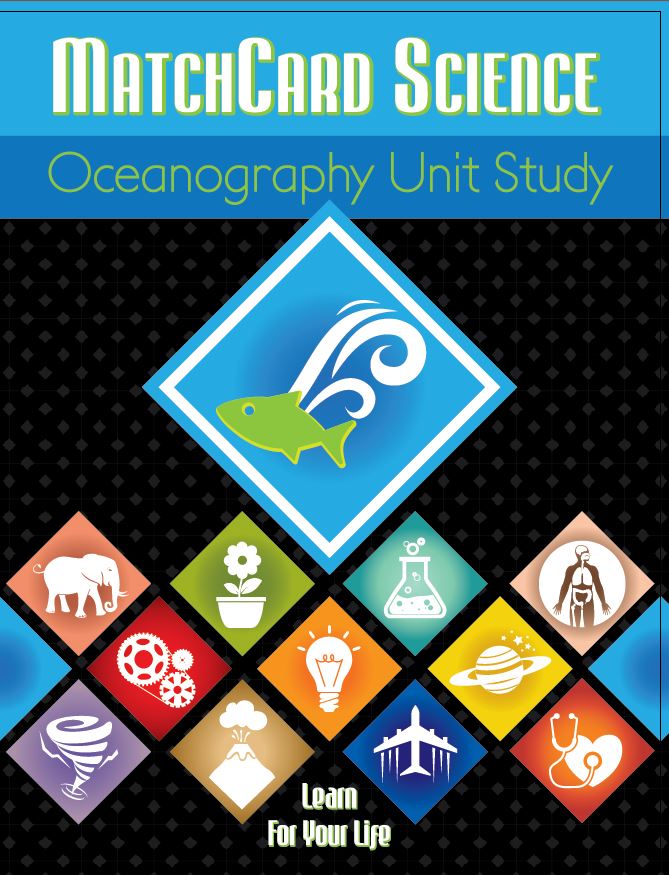
12 Science Unit Studies

Chemistry is only one of twelve complete unit studies for kids in 3rd to 8th grade.
Comprehensive objectives, hands-on projects, suggested science fair experiments, and the fun game-like MatchCards keep them interested in learning science. See all twelve MatchCard Science Unit Studies.
About Our Site
Hands-On Learning





